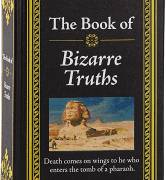The More We Blog, The More We Learn
The secret of good writing, according to Richard Harding Davis, is to say an old thing in a new way or a new thing in an old way. For us blog content writers, “saying old things in a new way” means that each time we’re preparing to compose content for a blog, rather than asking ourselves whether we’ve already covered that material and how long ago, we ought to plan content around key themes. That way, we can be using the same theme while filling in new details and illustrations. This precise thing is a concern, I’ve found over the year, of many business owners and professional practitioners. Even if they understand the marketing value of the blog, their concern is that, sooner or later, they (or their writer) will run out of things to say. I need to explain that it’s more than OK to repeat themes already covered in former posts. The trick is adding a layer of new information or a new insight each time.
When saying new things in an old way, conversely, introducing new information or suggesting a new attitude towards an issue, behavioral science tells us to create a perspective of “frame”, presenting new data in a way that relates to the familiar. Perhaps some information you’d put in a blog post months or even years ago isn’t true any longer (or at least isn’t the best information now available in your industry or profession). Maybe the rules have changed, or perhaps there’s now a solution that didn’t even exist at the time the original content was written.
“Links – you need ‘em,” writes Amy Lupold Bair in Blogging for Dummies. On a blog, the author explains, links are part of the resource you are providing for readers. Collecting links around a topic or theme helps to inform or entertain your blog’s readers. If you’re not only providing good content yourself, but also expanding on that content by using links, she adds, “you’re doing your readers a service they won’t forget.”
Thing is, as long as I keep learning, I stay excited and readers can sense that in my blog. Being – and staying – a lifelomg learner means “reading around” – reading other people’s blogs and articles, plus “listening around” paying attention to everything from broadcasts to casual conversations,
The more we keep learning, the better we blog, and the more we blog, the more we learn.






Follow us online!